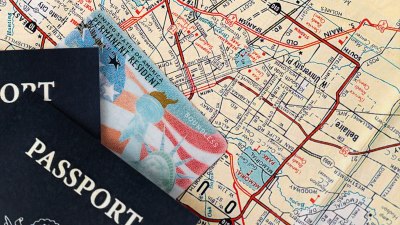How to Stay Connected to Wi-Fi and Power While Traveling in an RV
Tips for maintaining Wi-Fi and power connectivity on your RV adventures.

Traveling in an RV offers the freedom to explore scenic routes and enjoy the open road, but it also comes with unique challenges, particularly when it comes to maintaining connectivity and power. Whether you are planning a weekend trip or a long-term journey, staying connected to Wi-Fi and having reliable power sources are essential for a comfortable experience on the road. This guide aims to provide you with valuable tips and strategies to enhance your connectivity and power management while traveling in an RV.
Understanding Your Connectivity Needs
Before embarking on your RV trip, it’s vital to assess your connectivity needs. Consider the following questions: Will you be working remotely? Do you need to stay in touch with family and friends? Are you going to stream videos or play online games? By answering these questions, you can devise a plan tailored to your needs.
For remote workers, a stable internet connection is crucial. Having backup options for Wi-Fi and a reliable power supply can ensure that you can work productively no matter your location.
Finding Wi-Fi Connections
When it comes to Wi-Fi connectivity, RV travelers have numerous options. Here are some practical ways to stay online:
1. Utilize Campground Wi-Fi
Many campgrounds and RV parks offer complimentary Wi-Fi access. Before booking your stay, check the reviews and descriptions to ensure that the Wi-Fi is strong and reliable. Once you arrive, position your RV optimally to receive the best signal. Additionally, consider using a Wi-Fi range extender to enhance connectivity within your RV.
2. Mobile Hotspots
Investing in a mobile hotspot can provide you with a reliable internet connection while on the road. Mobile hotspots allow you to connect multiple devices to the internet using cellular data. Research different mobile network providers to find the best coverage in the areas you plan to visit. Additionally, having a multi-carrier device can help you maintain coverage across various regions.
3. Cellular Data Plans
If a mobile hotspot doesn't seem like the right fit, a good cellular data plan may suffice. Many smartphones allow you to create a hotspot to share your data connection with Wi-Fi capable devices. Be mindful of data limits and speeds, as these may vary based on your plan and location.
4. Public Access Points
Don't overlook public access points available in libraries, cafes, and hospitals. These locations often provide free Wi-Fi, and you can stay connected while enjoying a meal or taking a break from driving.
5. Wi-Fi Boosters
For those adventures in remote areas, consider investing in a Wi-Fi booster. This device amplifies weak signals, allowing you to connect to distant Wi-Fi networks. Ensure that your Wi-Fi booster is compatible with your RV's setup.
Managing Power Supply
Having a reliable power supply is critical to keeping your devices charged and ensuring your RV's systems work efficiently. Here are some strategies to maintain power while on the road.
1. Solar Power Systems
Solar panels can be an eco-friendly and efficient way to power your RV. Installing solar panels allows you to harness sunlight, providing you with a renewable energy source while off the grid. Consider your power needs carefully to determine the scale of your solar setup.
2. Generators
A portable generator is an excellent backup option for those times when solar power might not be enough. Generators can supply significant power to your RV. Choose between gasoline, propane, or diesel models based on your preferences, and ensure the generator is sized correctly for your needs.
3. Battery Upgrades
Upgrading your RV batteries can improve performance, allowing you to store more power for your devices. Lithium batteries are becoming increasingly popular due to their longer lifespan, lighter weight, and quicker charging capabilities compared to traditional lead-acid batteries.
4. Inverter Installation
Installing an inverter can convert DC battery power to AC power, which is necessary for many household appliances. Make sure to choose an inverter that can handle your power requirements effectively, and have it installed by a professional to ensure safety.
5. Energy Efficiency
Using energy-efficient devices can significantly extend your power reserves. When selecting appliances, opt for LED lighting, energy-efficient refrigerators, and smart devices that consume less power.
Planning Your Schedule
To optimize your Wi-Fi and power supply, plan your daily schedule wisely. For instance, designating specific times for charging devices or performing high-energy tasks can help in managing your resources effectively. This can include planning outdoor activities during daylight hours when solar panels can provide power while devices charge.
Staying Organized
Organization is key when traveling in an RV. Create a checklist of essential items and equipment related to Wi-Fi and power needs. Keeping track of cables, chargers, and devices will ensure you have everything you need, minimizing the chances of running into issues.
Emergency Plans
No matter how prepared you are, something may go wrong. Have a backup plan in case your primary power source fails or Wi-Fi connectivity drops. This could be as simple as knowing the nearest towns with public Wi-Fi access or which cafes allow you to use your mobile hotspot to connect.
Safety Considerations
When utilizing power sources like generators or solar panels, ensure that you follow safety protocols to avoid accidents. Understanding how to operate your equipment and following the guidelines can safeguard not just your connectivity but also your well-being.
Staying connected to Wi-Fi and power while traveling in an RV is essential for enhancing your experience on the road. By evaluating your connectivity needs, exploring various options, and implementing effective power management strategies, you can enjoy the perfect blend of adventure and technology. Prepare well, stay safe, and enjoy the freedom of exploring new destinations without sacrificing connectivity.











